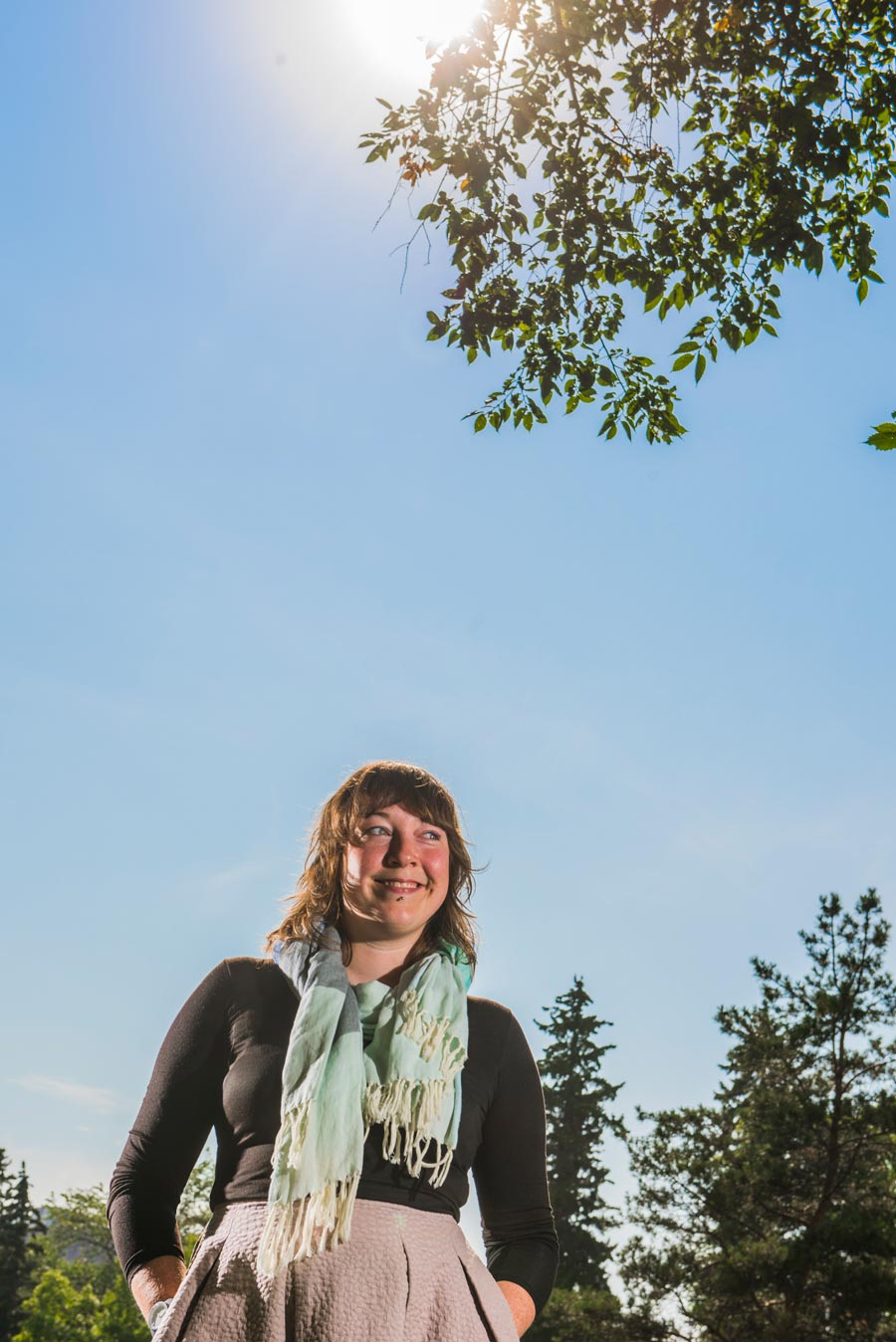
Sarah Styler, the University of Alberta's new environmental chemist, gets acquainted with Quad.
Meet Sarah Styler, the University of Alberta's new environmental chemist and one of three new faculty members joining the Department of Chemistry this year. Styler examines urban air pollution and is particularly interested in the chemistry that occurs during the interaction of dust with urban pollutants.
"I'm looking at reactions in the atmosphere and really trying to explore the chemical processes occurring there," says Styler, who joins the U of A following a post-doctoral fellowship in Germany at the Leibniz Institute for Tropospheric Research. "When dust particles absorb the sun's rays, they become like photocatalysts. They can promote chemical transformations that might not otherwise occur."
"First year chemistry is kind of like learning a language. A chemical language." -Sarah Styler
Styler says a lot of attention has been paid to the interaction of pollutants with surfaces from a heritage conservation perspective, from the corrosion or the dissolution of monuments to the aesthetic standpoint of soiled windows. Her postdoctoral work took a different approach to the situation. "I was more interested in how reactions on the surface of buildings actually mediate the composition of the surrounding atmosphere. It goes both ways. Buildings aren't just sinks for chemical species-they're reservoirs. And, under certain circumstances, they can spew them back out."
Here at the U of A, she is especially interested in understanding the chemical reactions occurring in particles in developing megacities. "We have a really western-focused understanding of air quality issues," says Styler. "In other cities, there's a different population of particles altogether because you have more dust and less stringent vehicle emission regulations, and essentially what happens is a soup of stuff mixing together in the atmosphere that's very different than what's happening in LA or Edmonton, for example."
"We need people asking different questions, and women tend to do that." -Margaret-Ann Armour
Although chemists often use simple chemical mixtures to represent atmospheric surfaces in the laboratory, Styler plans to study the reactivity of atmospheric particles more directly. "My plan is to sample particles from a variety of locations and bring them into the lab to use as substrates for chemical reactions to see what kind of reactions can actually happen on their surface," she says. "I want to bring things from outside into the lab to preserve the chemical complexity of the particles." Styler is also building an atmospheric reaction chamber, which she'll use to study the reactions of dust and exhaust gases in the lab.
Why UAlberta?
Styler's new lab is just one of the many renovations and upgrades currently taking place in the Department of Chemistry. "When I came for my interview, I was really impressed with the facilities here and also the support for new researchers. There's really strong mentorship in the department." With the addition of Styler and the two other new faculty members, the Department of Chemistry now boasts 33 faculty, three of whom are 3M national teaching fellows, more than any other chemistry department in Canada.
"Though I am the only person in the Department of Chemistry exclusively focusing on environmental chemistry, there are a lot of people who are dabbling in it, so there's the opportunity to work with a lot of different people."
Learning a new language
In addition to getting her lab up and running-she's currently recruiting graduate students-Styler is teaching an introductory chemistry course this fall. "First year chemistry can often be really divorced from its applications," says Styler. "It's important to remind students how people use the tools they learn in their introductory courses to apply to what they will do afterward. It's kind of like learning a language. A chemical language." Styler will also be teaching environmental chemistry in the winter term.
Women in science
There are six new faculty members joining the Faculty of Science in 2015/16, four of whom are women. This is thanks in no small part to the efforts of Margaret-Ann Armour, Associate Dean (Diversity), herself a chemist. "For me, what was exciting this year was that the selection committees recognized the importance of diversity in the faculty," says Armour. "They made much more effort to get women to apply. It's wonderful to see the outstanding women candidates that we attracted.
"I have very high expectations for these women, both for research and teaching, but also as role models and departmental citizens who will bring something unique," Armour continues. "I'm biased I know, but we need people asking different questions, and women tend to do that." The four new female faculty members brings the percentage to ~20% in the Faculty of Science as a whole. "We're not at the critical mass of 30 or 33% yet," says Armour. "When I started a decade ago, we were at 14%. So it's slow progress, but I see momentum building, and I have high hopes that the momentum will continue this year as we hire in to math and computing science."